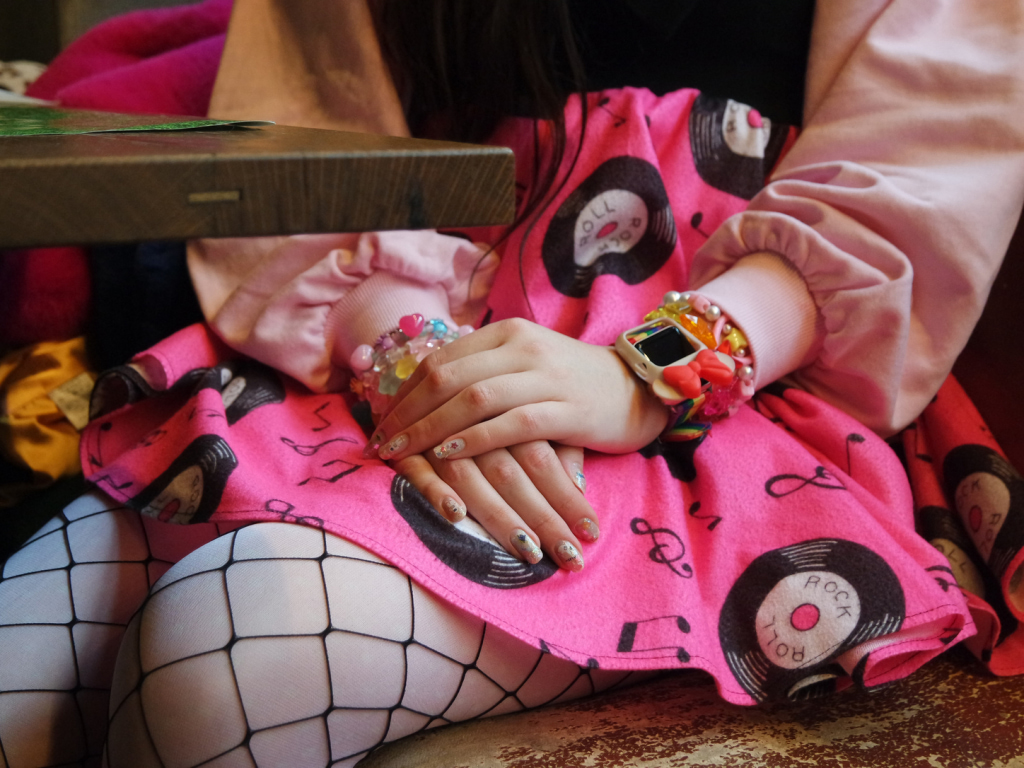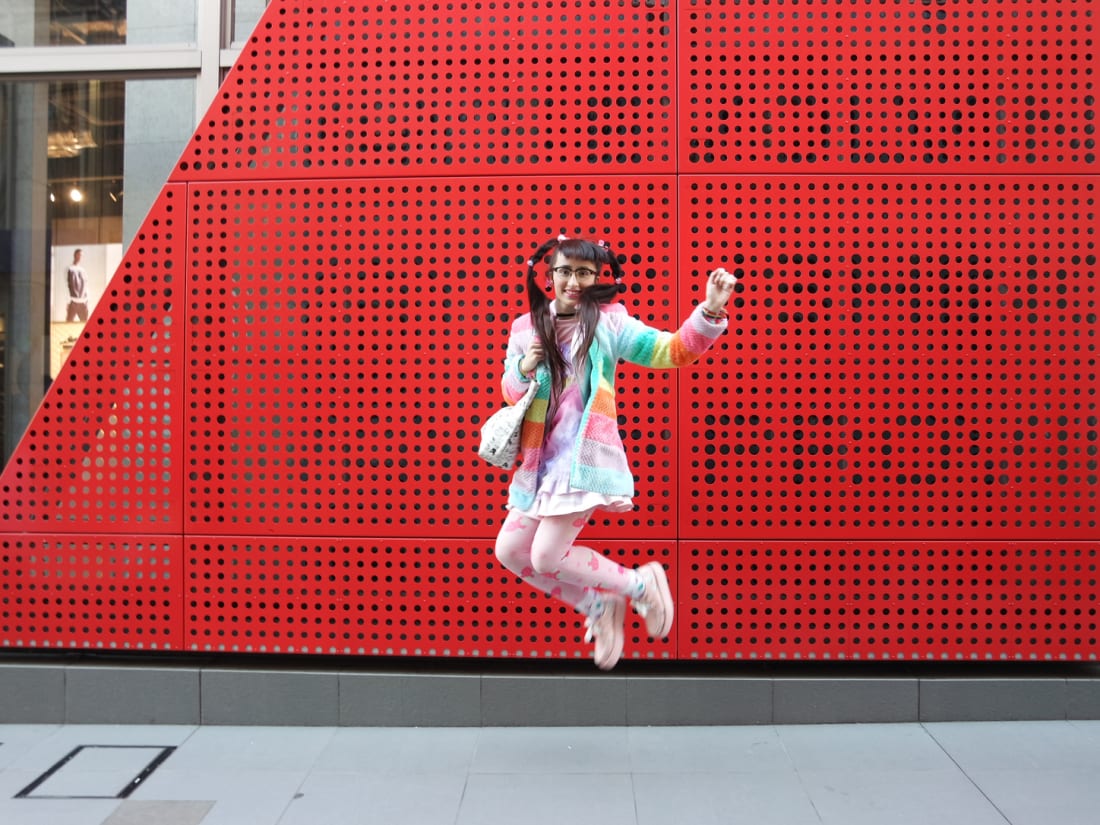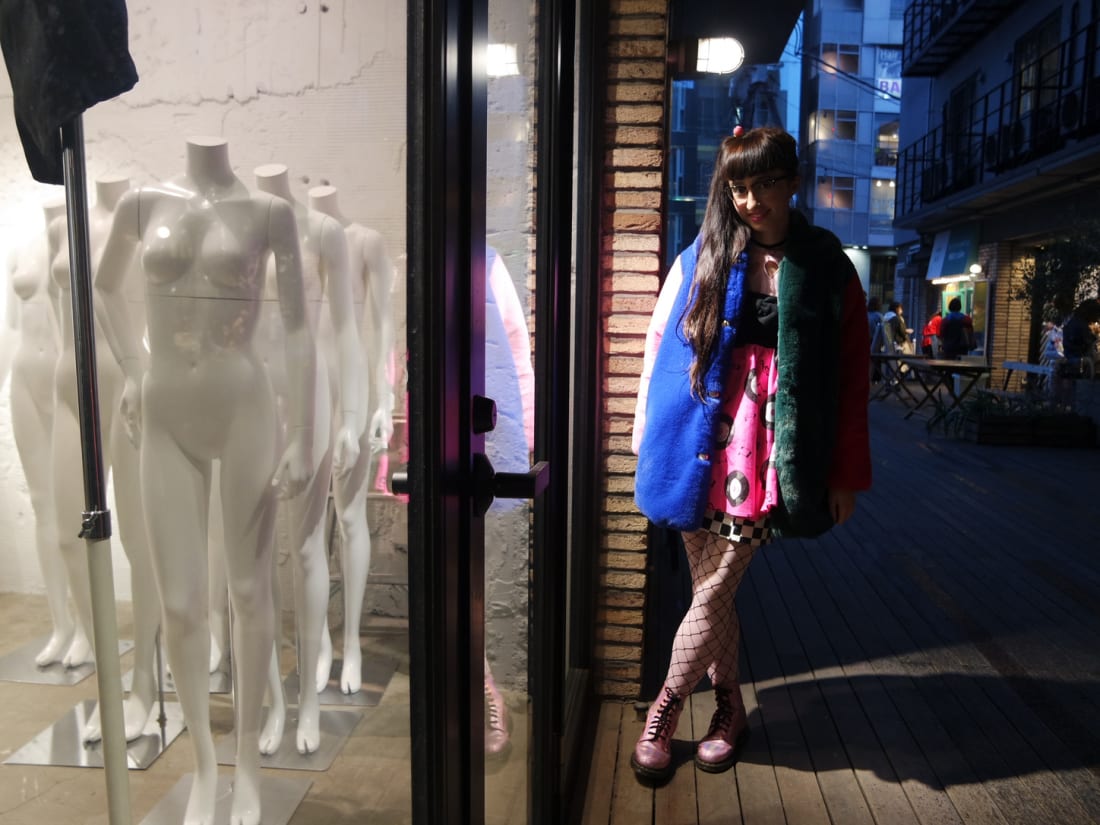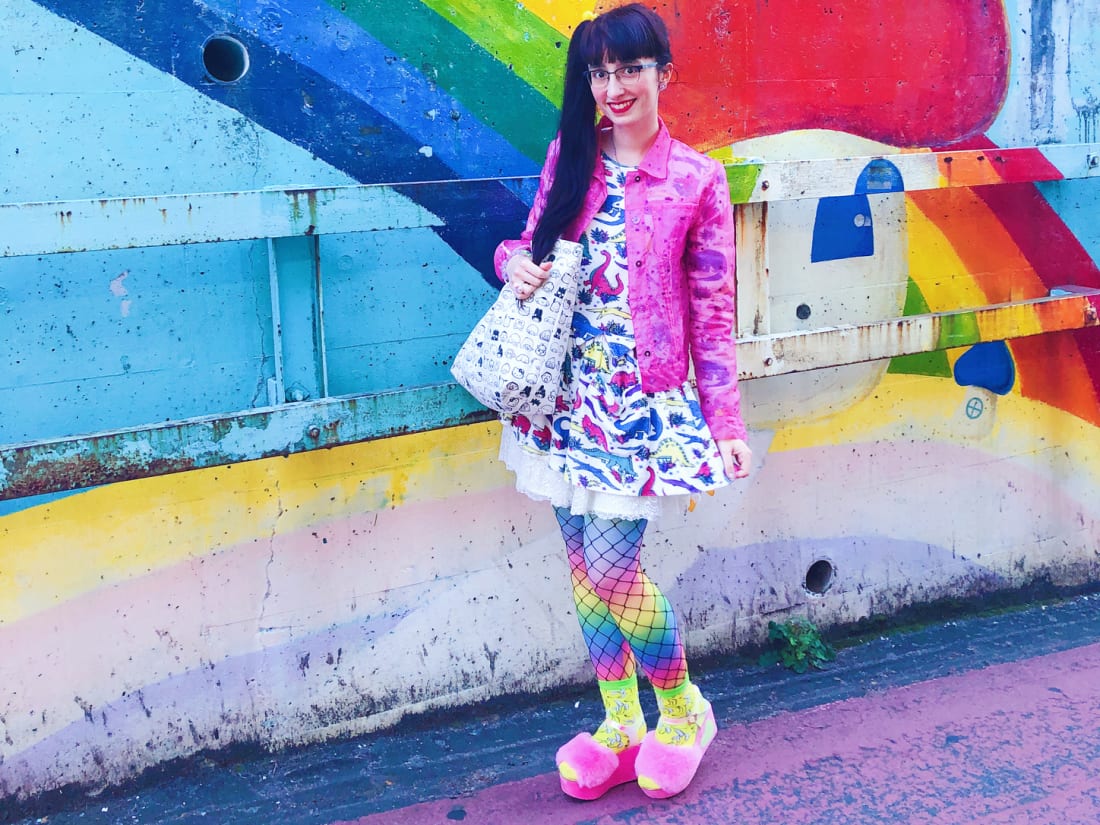Sarah Gil Barranco knows what dreams are made of. After all, she’s right in the middle of living hers, being a Harajuku girl in Tokyo. Sitting in an iconic cute café in Harajuku we calculate together her years of involvement with the kawaii scene, trying to quantify passion in numbers. We settle on 15 years of actively dressing up kawaii, around 10 years of which she has been physically present on the Harajuku streets.
The Long Way from Spain to Harajuku
“I remember not caring what I wore. Clothes were just clothes,” she reminisces. “But when I discovered Harajuku fashion, I suddenly realized that was exactly what I had wanted all along.” This realization when she was a teen has pink-colored Sarah’s path and she has dedicated herself entirely to all things kawaii.
She grew up in a small town in Catalonia, Spain, standing out like a sore kawaii thumb, even encountering occasional bullying for her fashion choices. But she never wavered. In times of fledgling social media and when online shopping was a rare exception, Sarah connected with all Harajuku kids she could find online, voraciously learning Japanese and saving up to go to Japan.
After years of trips to Japan, Sarah got the MEXT government scholarship in 2016 and moved to Tokyo to work towards a master’s in education. Her research focuses on the experiences of people wearing non-mainstream fashion in school and in the workplace, a topic she is passionate about.
Foreign-born Harajuku kids are rare, but Sarah says that wasn’t a hurdle for her. As soon as she overcame the language barrier, people opened up to her. What did change for her is the pace at which she explores Harajuku, now slower, and the whole experience somehow amplified.
She now shops like a local: no shopping sprees, more thrifting through secondhand stores, more bargaining, more deliberation. She advises diving into the backstreets, called Ura-Harajuku, and visiting the same store frequently as inventory changes rapidly. She can now expertly browse limited-time events like LaForet’s Grand Bazaar and rake through online secondhand stores like Mercari. Above all, her connection to the kawaii scene has grown stronger and deeper.
A Tour Through Tokyo’s Subculture World
Navigating the intricate ins and outs of Tokyo is not an easy task, even for a local, so exploring with a guide is becoming more popular. And we’re not talking big hordes and a flag-waving megaphone-wielding kind of guide, but more of an intimate, inconspicuous tour. Sarah works as such a guide with Akibaland tours, guiding visitors through the kaleidoscope of subcultures that is Harajuku. She designs the tours herself and guides people in English, Spanish or Catalan languages.
She says the tours are both a learning and a teaching opportunity, as she finds out what people’s misconceptions are and takes the opportunity to educate them. One common issue is that people have a narrow image of Harajuku culture, possibly due to stereotypes perpetuated by mainstream media.
Sarah constantly uses the words, “not only.” Subcultures do not only exist in Harajuku, and it’s not only kawaii fashion, there are many styles. No, it’s not only Harajuku kids on Harajuku streets, there’s no fashion police inspecting your look when you cross over from Omotesando. It’s not only young people, there are older Harajuku fashionistas too.
Moreover, Sarah wishes people wouldn’t mix up fashion and cosplay – Harajuku people are not wearing costumes, they’re dressed the way they want. Finally, when it comes to manners, she notes that some tourists have the bad habit of taking photos without asking first. Some street fashionistas love the attention, but some don’t, and after all, the people there are not exhibits.
What is Next for Harajuku?
Harajuku flows beyond Harajuku, as many street fashion enthusiasts will tell you. Sarah agrees but she doesn’t like the, “X is the new Harajuku,” phrasing. Shimokitazawa and Koenji, hubs of vintage fashion and self-expression, are more like additions, or extensions, of the street fashion scene. And nothing rubs her more the wrong way than the phrase, “the death of Harajuku.”
“Look, every generation at some point says Harajuku is dying, but it’s actually only changing,” Sarah notes. Of course, certain Harajuku styles keep changing, but Harajuku kids are the ones driving the change and owning it. And who doesn’t want to try new things? Admittedly, some styles do disappear from the streets, but they still live on as inspiration to fashion designers and brands and can be endlessly revived, remixed or referred to.
Among the changes Sarah has noticed in the past decade is the appearance of the monthly Harajuku fashion walk, giving people the opportunity to meet up. She has also noticed more foreigners dolled up in one Harajuku style or another, as well as new fashion styles cropping up. She has also witnessed the end of some street fashion magazines and the rise of social media accounts showcasing fashion, but she fears this has put a distance between people if they choose to only interact online.
Your clothes don’t have to be your thoughts.
Harajuku fashion icon and manga artist Bisuko was the instigator for the recent trend “men-hera kei” or “mental health fashion,” which started a couple of years ago to raise awareness of mental health issues. “Men-hera kei” uses “magical girl” (mahou shojo) imagery combined with medical accessories like bandages, blades, surgical masks, faux cuts and other markers of self-harm.
However, Sarah notes that having a higher goal like this is an exception and not a rule when it comes to Harajuku styles, and the same goes for having one and only designated leader. “Your clothes don’t have to be your thoughts,” she remarks. She believes fashion should be fun and playful if you want it to be, and you should not stop being yourself in order to impress someone, to be featured on a fashion blog, to follow a leader or to send a message.
“Wherever fashion junkies go and are themselves, that’s where the Harajuku fashion scene is,” Sarah says, adding “and as long as people are rebelling against mainstream fashion and beauty standards, there will still be Harajuku fashion.”
Follow Sarah Gil Barranco’s kawaii style on Instagram at @sarah_nyappy
Updated On April 26, 2021












